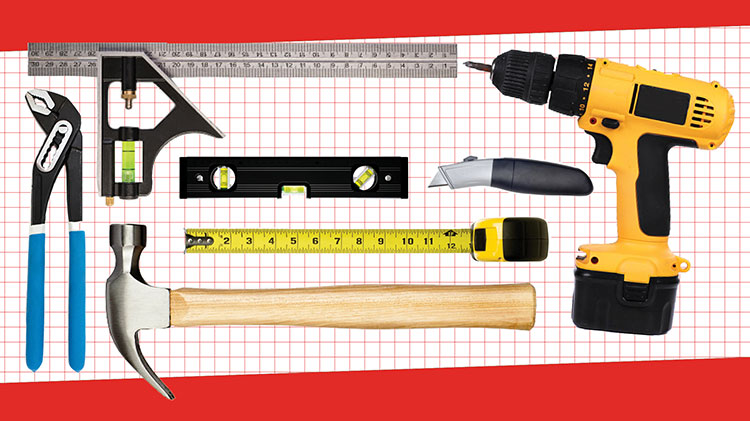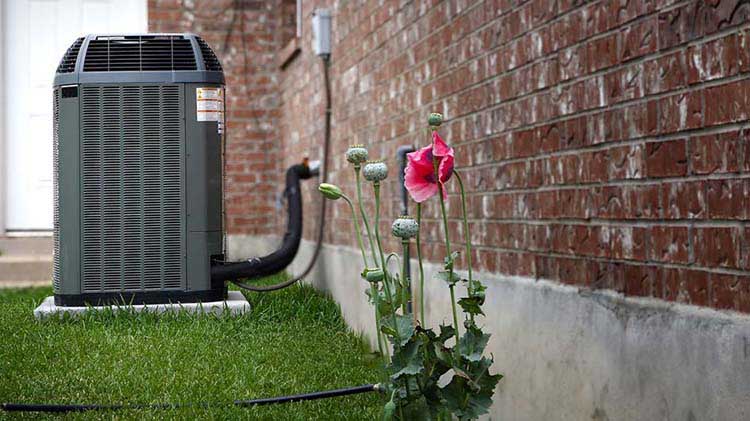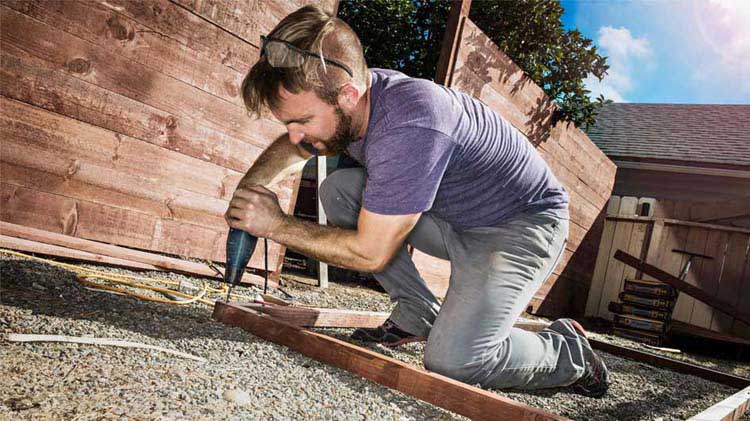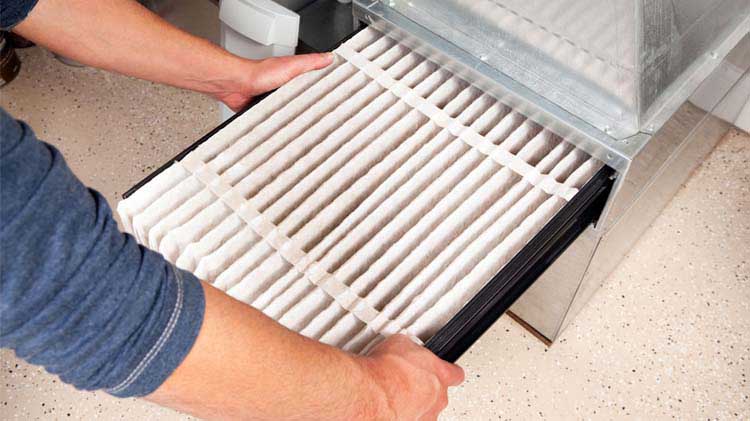Basic hand tools every homeowner or renter should own
Build a basic tool kit for your home with these essential hand tools, and you'll be prepared for nearly everything.
Especially for the avid DIYer, having a well-stocked toolbox with the right tools is both handy and practical. Having a basic tool kit allows you to perform a whole host of maintenance and improvement tasks around your home or apartment. There are essential hand tools and items to aid your safety and protection when you are working. Nearly every homeowner or renter benefits from having the right tools on hand. Here are some basic tools to include.
Slip-joint pliers
Select slip-joint pliers made with forged steel. Choose a style that has sharp and fine teeth in front and coarse teeth in the back. Many styles also have a useful wire cutter built into the neck of the pliers. This tool is versatile and is excellent for many projects.
Combination square
Include a combination square that locks, has measurements and has both 90 and 45 degree heads. This will provide more accuracy when transferring measurements to your project. A combination square with a built-in spirit vial offers leveling options, too. And a metal combination square is more durable.
Hammer
A hammer can be used for a wide variety of uses or projects. A must-have versatile tool for your set is a hammer with a smooth-faced steel head and 16-inch wood handle with overstrike protection. This style is lighter than some of the others and lower in vibration. Select a weight and style that feels comfortable when lifted overhead. Some styles even have a built-in side puller and magnetic nail holders.
Standard level
Be sure to include a .0005''/1'' standard level to provide more accuracy and one that has a clearly visible bubble. Metal levels are more durable and there are also digital options that may improve accuracy. A level with two- or four-foot levels works best for most jobs and can be used as a straight edge or ruler as well.
Tape measure
Tape measures come in a variety of styles and are a useful basic tool to have in your set. A tape measure that has an end magnetic hook and 16ths measurements allows for the best readability. Some tape measures fully extend to a length up to 40' and have a bigger standout number that allows you to extend them without collapse. A wider tape measure is generally stronger when extended.
Adjustable wrench
Another basic hand tool to have is an adjustable wrench. A size 8 or 10 with a padded handle allows for increased strength. Select one with a strong, secure lower jaw and thumb turn for easier use.
Utility knife
Make sure to include a utility knife with an easy blade change-out and in-knife blade storage. Some styles are retractable or foldable and have hang holes for storage. Many styles of utility knives have multiple positioning and safety shields as well as nonslip rubber grips for hand protection. Another feature some knives have is a slit in the knife body to cut string. Whatever style you select, having a utility knife is a versatile tool for your set.
Cordless drill
Stocking your tool set with a cordless drill with a T-handle is a good choice. Select one with voltage (4 and up) based on power needs. Heavy duty jobs may require a higher voltage and a heavier battery. It is best to have a cordless drill that includes a forward/reverse switch and has more clutch settings (24 is a minimum). This allows for greater control.
Screwdrivers
Finally, be sure to include a manual screwdriver set and/or a ratcheting and multi-bit screwdriver. Multi-bit screwdrivers save on space in the toolbox. A manual screwdriver set lets you maneuver into tight positions.
Safety comes first
Protecting your eyes, ears and hands is important when doing any home maintenance and improvement tasks. Here are a few protective pieces to keep in your toolbox.
- Safety glasses or goggles. Investigate the lens material and coating for impact resistance and ensure they're comfortable to wear.
- Ear plugs. Foam works well for one-time use, but earmuffs may be worth it if you complete lots of loud tasks.
- Gloves. Choose ones that protect your hands from the materials you will work with.
Renter, homeowner, DIY expert, construction newbie: Whether you're hanging a picture or tearing down a wall, you need these foundation elements of a toolbox.
Starting with the basics allows you to perform a whole host of maintenance and improvement tasks around your home or apartment. Protect yourself while working with tools by keeping safety supplies in your toolbox as well. Here are tools to include in your basic tool set.
1. Slip-joint pliers
Look for:
Forged steel and sharp teeth, with fine teeth in front and coarse teeth in the back.
Add a tool:
A pair of locking pliers are a great way to grab things or hold them in place.
2. Combination square
Look for: Measurements, or heads, of both 90 and 45 degrees; locks to ensure accuracy when transferring measurement. Secondary spirit vial offers leveling. Metal is more durable.
3. Hammer
Look for: A smooth-faced steel head and 16-inch wood handle with overstrike protection; it's lighter and low in vibration. Weight should feel good when lifted overhead. Also nice: a built-in side puller and magnetic nail holder.
4. Standard level
Look for: .0005 ''/1'' accuracy; clearly visible bubble; metal for durability. Digital may improve accuracy. Two- or four-foot levels work best for most jobs and can be used as a straight edge or ruler.
5. Tape measure
Look for:
An end magnetic hook. 16ths measurements for readability. A fully extended length up to 40'. A bigger standout number means you can extend it without collapse. A wider tape equals stiffness.
Add a tool:
a lightweight 6' or 8' ladder for working above head height.
6. Adjustable wrench
Look for:
A size 8 or 10 with a padded handle for increased strength. A strong, secure lower jaw. Thumb turn should be easy to use.
Add a tool:
An Allen keys set lets you drive bolts and screws with a hex head.
7. Utility knife
Look for:
Easy blade change-out and in-knife blade storage. Retractable or foldable and hang holes for storage. Lock with multiple positioning and safety shield and nonslip rubber grip for hand protection. Slit in knife body to cut string.
Add a tool:
A putty knife lets you scrape walls and apply putty.
8. Cordless drill
Look for:
A T-handle for comfort. Choose voltage (4 and up) based on power needs; higher equals heavier duty jobs but a heavier battery. Musts include a forward/reverse switch. More clutch settings (24 is a minimum) equal greater control.
Add a tool:
A manual screwdriver set lets you maneuver into tight positions.
Safety comes first
Eyes, ears and hands (as well as your muscles) are important to any home maintenance and improvement task you might take on — and protecting them is essential. Here are three protective pieces to keep in your toolbox:
Safety glasses or goggles
Investigate the lens material and coating for impact resistance and ensure they're comfortable to wear.
Ear plugs
Foam works well for one-time use, but earmuffs may be worth it if you complete lots of loud tasks.
Gloves
Choose ones that protect your hands from the materials you will work with.
Learn more about how you can protect and take care of your home and view other helpful information: statefarm.com/simple-insights





